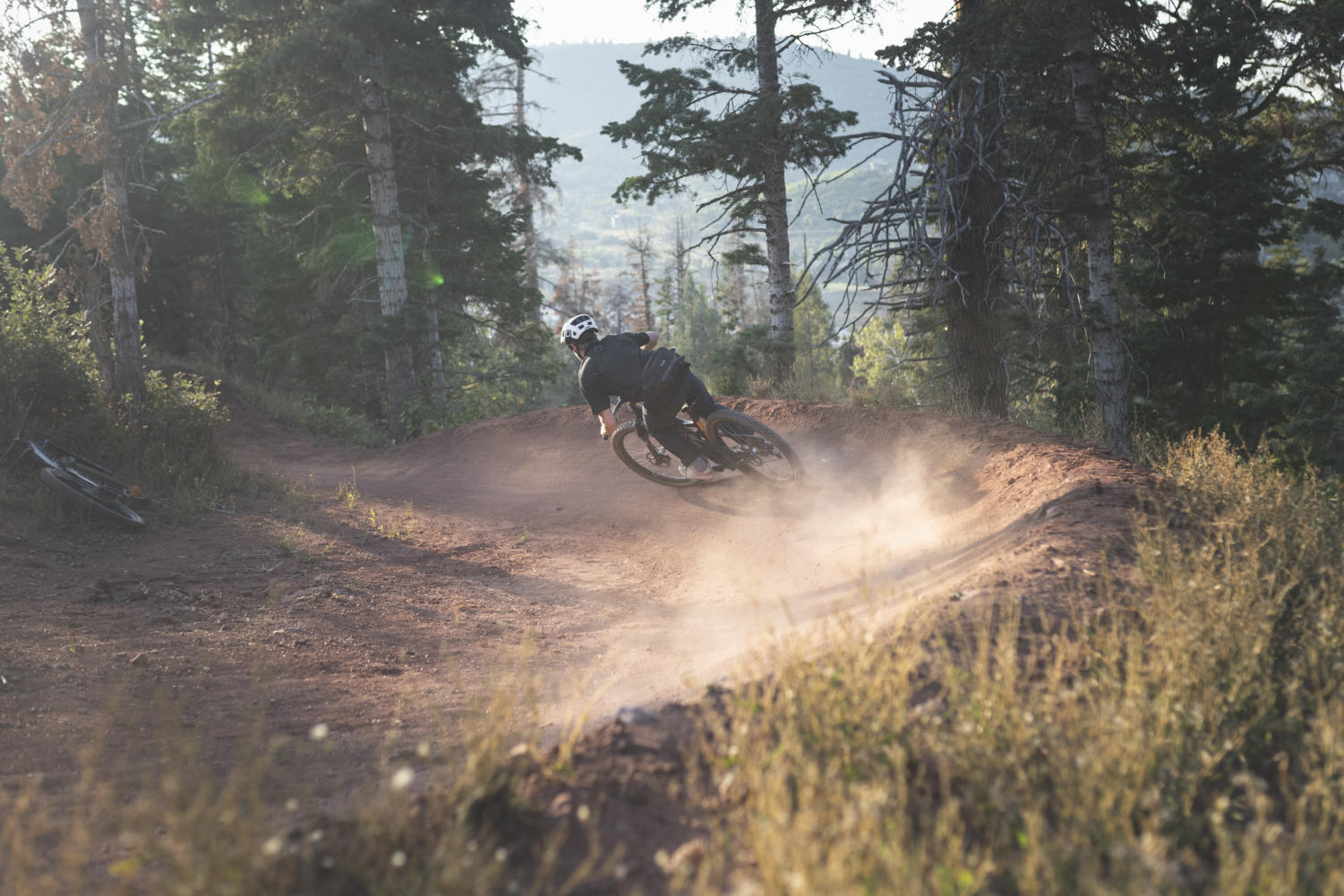The Power of Trail Infrastructure as a Public Health Measure and Beyond
November 8, 2021
“What is public health?” This question was posed to me during my very first semester at the University of Utah by a charismatic guest speaker, bouncing on the balls of his feet at the podium of a pit lecture hall. The class stumbled on their words, and students raised their hands and called out things like vaccines or healthy choices campaigns. The speaker listened closely to our ideas, and said with a smile: “you see the effects of public health in every second of every day!”
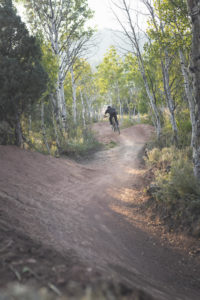 Our daily lives are saturated with the influence of public health policies. Every time you walk on a sidewalk, you can thank the policy and infrastructure designed to reduce automobile accidents. When you fill up a Nalgene with tap water, you’ll be drinking fluoridated water designed to strengthen teeth. All our pencils, the basic materials in our school desks, and the plastics in our water bottles, have all passed tests to ensure they don’t contain toxic materials. And those times every couple of seasons when you really wanted to make a caesar salad but the grocery store was completely out of lettuce — there was a food safety response to an E. coli outbreak. Over the years, public health has solved many of our nation’s problems: we implemented sewage systems that stopped dysentery outbreaks, we’ve had mass vaccine rollouts that stopped smallpox and polio, we’ve put in place education efforts to promote general health by discouraging tobacco use, encouraging healthy movement to reduce obesity, and awareness campaigns surrounding condom uptake.
Our daily lives are saturated with the influence of public health policies. Every time you walk on a sidewalk, you can thank the policy and infrastructure designed to reduce automobile accidents. When you fill up a Nalgene with tap water, you’ll be drinking fluoridated water designed to strengthen teeth. All our pencils, the basic materials in our school desks, and the plastics in our water bottles, have all passed tests to ensure they don’t contain toxic materials. And those times every couple of seasons when you really wanted to make a caesar salad but the grocery store was completely out of lettuce — there was a food safety response to an E. coli outbreak. Over the years, public health has solved many of our nation’s problems: we implemented sewage systems that stopped dysentery outbreaks, we’ve had mass vaccine rollouts that stopped smallpox and polio, we’ve put in place education efforts to promote general health by discouraging tobacco use, encouraging healthy movement to reduce obesity, and awareness campaigns surrounding condom uptake.
While studying at the university, I have become more aware of the ways in which public health policy influences my life. However, until I was suddenly sent home from university at the onset of the coronavirus pandemic, I had never considered the ways in which the sphere of public health connected to another fundamental aspect of my life: the outdoors.
Spring of 2020 was fraught with many fears and unanswerable questions: would lockdown work? Would the hospitals become overwhelmed? Were friends and family members going to get extremely sick? But some of the other questions were more based on our daily lives: would schools reopen? Can I go to the grocery store? Can I jog outside? We certainly couldn’t go to gyms, and in many areas, the trail systems and other ways to access outdoor spaces were shut down.
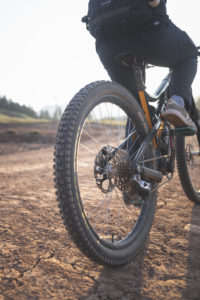 I was extremely fortunate to have returned to a tiny town with a small enough population that trail systems stayed open. This access made me realize just how fundamental trails are to my own physical and mental wellbeing: I found myself going for runs and bike rides nearly every day. It was a way to get out of the house, to move my body, to have space from the family that I wasn’t expecting to be living with again, and ultimately to destress and reconnect with the outdoors. Solo time out on the trails kept me functional during the time of lockdown. However, I am aware that people in more densely populated areas did not have this same privilege because their area decided the risk was too high to keep trails open. For countless other people, the local area has no existing trail infrastructure. This fear of losing my access to an outdoor trail system made me recognize exactly how fundamental they are to my wellbeing and to the wellbeing of communities.
I was extremely fortunate to have returned to a tiny town with a small enough population that trail systems stayed open. This access made me realize just how fundamental trails are to my own physical and mental wellbeing: I found myself going for runs and bike rides nearly every day. It was a way to get out of the house, to move my body, to have space from the family that I wasn’t expecting to be living with again, and ultimately to destress and reconnect with the outdoors. Solo time out on the trails kept me functional during the time of lockdown. However, I am aware that people in more densely populated areas did not have this same privilege because their area decided the risk was too high to keep trails open. For countless other people, the local area has no existing trail infrastructure. This fear of losing my access to an outdoor trail system made me recognize exactly how fundamental they are to my wellbeing and to the wellbeing of communities.
Laura Prendiville, the Development Manager for Gallatin Valley Land Trust (GVLT), noticed this dependency on trails during the pandemic in Bozeman, Montana. According to Prendiville, the GVLT receives “notes from people all the time saying that the trails ‘saved their sanity’” during the pandemic. The Land Trust also noticed that the usage of trail systems adapted with the situation, with locals utilizing the outdoor system for “business meetings, dates, social engagement. Trails weren’t just limited to physical fitness.” Trails served an invaluable purpose as a safe space to connect when other more traditional socialization spots were locked down, and many have carried on socializing via the outdoors since the pandemic.
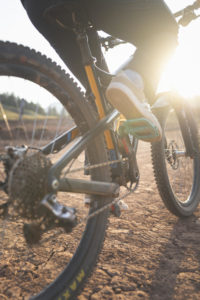 Beyond the pandemic, it is also important to recognize the impacts that trail systems have on the physical health of communities. The United States and many other developed nations grapple with negative health outcomes related to obesity and minimal activity such as heart disease, diabetes, and stroke. In a wide area of research, hiking and walking have been shown to decrease blood pressure, reduce risks for heart disease, improve bone density and alleviate stress. The public health benefits from investing in trails have also been supported by research: according to a survey performed in Nebraska by the National Medical Expenditure, every $1 invested in trails returned $3 in direct savings on medical costs.
Beyond the pandemic, it is also important to recognize the impacts that trail systems have on the physical health of communities. The United States and many other developed nations grapple with negative health outcomes related to obesity and minimal activity such as heart disease, diabetes, and stroke. In a wide area of research, hiking and walking have been shown to decrease blood pressure, reduce risks for heart disease, improve bone density and alleviate stress. The public health benefits from investing in trails have also been supported by research: according to a survey performed in Nebraska by the National Medical Expenditure, every $1 invested in trails returned $3 in direct savings on medical costs.
When considering trails as a way to promote public health, it is also important to notice which communities are served by the infrastructure. The threshold to access outdoor spaces and local walking trails is more surmountable than the financial burdens required to access gym spaces or purchase expensive equipment or gear. The only requirement is a pair of walking shoes, and maybe a form of transportation, although some areas in Salt Lake City are accessible from neighborhoods. This means that a more diverse population can access trail systems more easily than other outdoor activities or other forms of exercise that have more costly barriers. According to Prendiville, “the benefits are even more necessary” in populations that don’t traditionally have access to trail infrastructure. The GVLT is working to bring the benefits of trails to those communities by starting a free program called Discovery Walks (provided in both English and Spanish), which is designed to get people outside, even if they are not currently trail users. This simple introduction can encourage different communities to develop a connection to the trail systems. These steps towards building equitable access to trail infrastructure are extremely valuable for the public health of all community members.
As the Development Manager, Prendiville witnesses the emotional and sentimental power of trails: “It’s remarkable the stories we hear. People spreading ashes, people getting engaged, people learning about a job or an opportunity … people have this real visceral connection to the trails.” While trails are an area to physically recreate, they also have an extremely powerful benefit as a locus in which community is built.
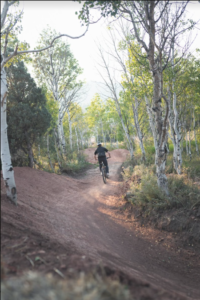 The virtues of trails don’t cease to exist beyond Bozeman or Salt Lake City. “Even in a place like New York City, if you walk to the Highline at any point in the day or night — it’s an old railway trestle in the middle of the most densely populated city in the United States — it’s packed, all the time.” All across the world, people are accessing trails because they “need their fresh air, they need their exercise, they need the community that you experience when you’re on the trail with other trail users. Trails are absolutely critical public health infrastructure.”
The virtues of trails don’t cease to exist beyond Bozeman or Salt Lake City. “Even in a place like New York City, if you walk to the Highline at any point in the day or night — it’s an old railway trestle in the middle of the most densely populated city in the United States — it’s packed, all the time.” All across the world, people are accessing trails because they “need their fresh air, they need their exercise, they need the community that you experience when you’re on the trail with other trail users. Trails are absolutely critical public health infrastructure.”
As our community is rising up from the public health struggles of the pandemic, we should be working to find ways to support our own health, the health of our neighbors, and the health of our communities. While putting together this puzzle of health promotion, trail systems should be seen as an integral piece that supports physical health, mental wellbeing, and the strength of communities.
